| Author |
Message |
    
chris_spring
Member
Username: chris_spring
Post Number: 25
Registered: 02-2019
| | Posted on Wednesday, July 17, 2019 - 01:22 pm: | 




|
Without doubt there are minds watching this site much sharper than mine. To them I pose a question. My ignition system comprises a Model T trembler coil which I am told draws 1.3 amps. I have it connected to a 6v 20 ah lead acid battery. My motor turns 600 rpm. How long will that battery power the ignition system between charges? I don't believe it is a simple equation. Currently I am in the habit of re-charging the battery after every use.
Cheers! |
    
miro
Senior Member
Username: miro
Post Number: 1050
Registered: 11-2001

| | Posted on Friday, July 19, 2019 - 09:08 am: | 




|
Yes, you can go through the whole thing . . .
eg Each time the timer makes contact you pull about 8- 10 watts for a sub-second time interval, calculate the energy or the number of watt-seconds used during each run etc etc.
But practically, this ain't a moon-shot where every watt is precious.
You could probably get away with running the battery for a couple of hours several times a week
for a couple of weeks, before needing to re-change the battery.
Easiest thing to do is measure the battery voltage when running with a good analogue meter (digital voltmeters have a nervous breakdown when measuring interrupted battery loads). When the voltage gets below about 12.5 V, then re-charge overnight.
You'll find that you'd re-charge a couple of times per summer.
Miro |
    
miro
Senior Member
Username: miro
Post Number: 1052
Registered: 11-2001

| | Posted on Friday, July 19, 2019 - 09:37 am: | 




|
OOPS - not 12.5 V - should be 6.3V . . . miro |
    
ernie
Senior Member
Username: ernie
Post Number: 2534
Registered: 01-2002

| | Posted on Friday, July 19, 2019 - 01:41 pm: | 




|
It should be run on 12 volts anyway. Model T Fords actually ran on 16 volts AC when on the mag. I have used Model T coils for over 30 years on 12 volts and never had a failure. You get a lot better spark out of it on 12v too.
Hope this helps
Ernie
As to charging...
Not very often, however
I ran out of electricity once. After that I made a battery box that had 2 batteries in it each on a separate switch. I also always carry an extra coil. |
    
chris_spring
Member
Username: chris_spring
Post Number: 26
Registered: 02-2019
| | Posted on Saturday, July 20, 2019 - 09:43 am: | 




|
Thanks. I wish posting pictures wasn't such a PITA. My battery box contains two coils. One is a spare. I also have a spare 6v 20 ah battery, a solar panel, and a wiring harness. Later next month I am hoping to take the boat on a 202 km trip lasting about a week. It will probably run 5-6 hrs per day. To deal with the electrical power issue, I have made a separate box that contains the second battery, solar panel, and harness. The harness will allow me to charge the spare battery as well and connect the two batteries in parallel. As well, the harness will allow me to charge both batteries if shore power is available. The solar panel is a small one used to charge the batteries used in deer feeders. It doesn't output much, but I a hoping it will be up to the task. In use I simply set up the box with the panel pointed toward the sun. I can charge while under way. I haven't fully tested it yet so I have no idea if it will work, or how well. When I find out I'll let you know.
Cheers! |
    
ernie
Senior Member
Username: ernie
Post Number: 2535
Registered: 01-2002

| | Posted on Saturday, July 20, 2019 - 02:04 pm: | 




|
Chris,
Send me your pics and I will post them.
Your plans sound like fun
Good luck
Ernie |
    
ernie
Senior Member
Username: ernie
Post Number: 2536
Registered: 01-2002

| | Posted on Monday, July 22, 2019 - 03:46 pm: | 




|
Here are Chris's pics and info.
Hi Ernie.
Thanks for your kind offer to post pics. In the pics you will see the electrical box which houses 2 trembler coils, the in-use coil plus a spare. It is a simple matter to swap them out.
The box also houses a 6v 20 ah lead acid battery identical to the one included in the later pics. The system is protected by an in-line 5 amp fuse.
There is a pic showing the charging system set up as well as one showing it stowed away. Set up, the standby battery receives a charge via the solar panel. The panel has overcharge as well as reverse current protection built in. The standby battery can also be connected in parallel to the main battery. There is an additional pig tail whereby a trickle charger can be connected to the main battery, standby battery, or both if shore power is available. There is no provision to charge the main battery via the solar panel. When not in use the pigtail to the main battery is capped and stowed out of sight.
The connectors come from RC models. They are called Deans connectors and are available at hobby shops selling RC aircraft. I find them handy and simple to use.
I picked up the solar panel at I believe Gander Mountain. The wire and connectors I had on hand. All in, not including the standby battery I probably have about $50 US tied up in this. although the system has yet to be fully tested, if it works according to plan, I should be able to operate indefinitely independent of shore power.
In addition to the pics I ask that you post the text of this message explaining it.
Much appreciated.
Cheers!
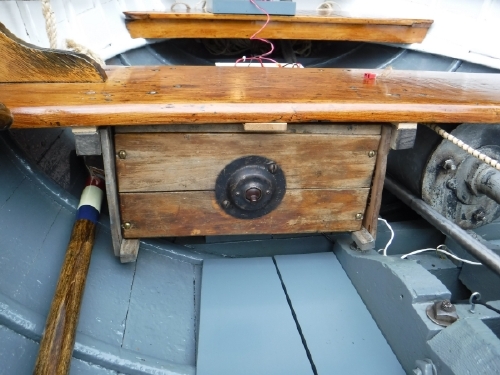
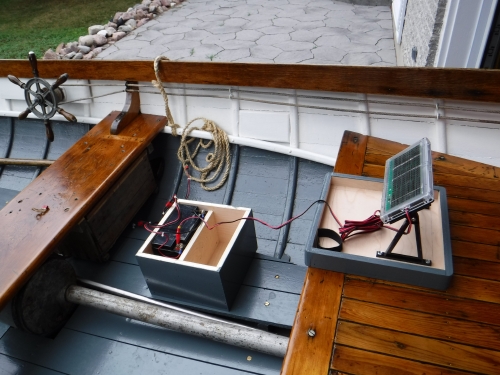
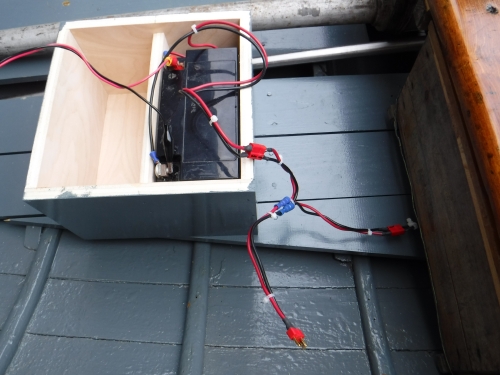
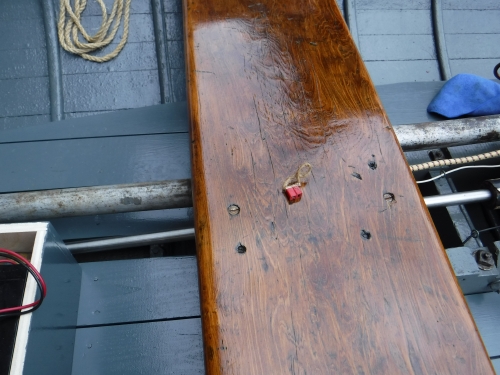
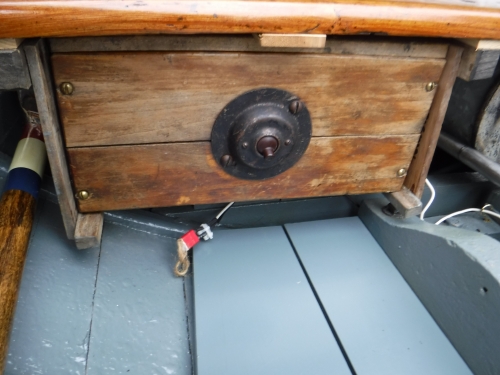
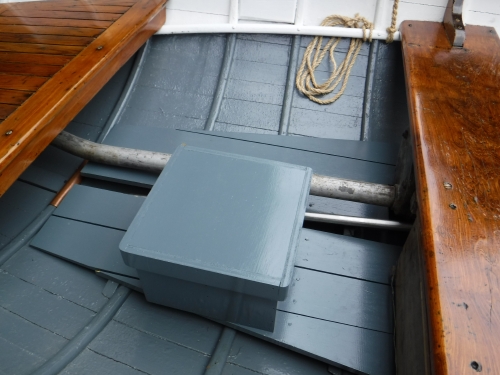 |
    
chris_spring
Member
Username: chris_spring
Post Number: 27
Registered: 02-2019
| | Posted on Saturday, July 27, 2019 - 11:08 am: | 




|
Ernie. I am seriously considering your comment wrt 12v. Here is where I need some help and advice. As I mentioned my tremblers are set up for 1.3 amps at 6v. I presume I can hook them up to 12v with no change. I am inclear as to what to expect for amperage draw. My question for you is to ask if you could hazard a guess as to what kind of run time I could get out of a 12v 7 ah battery? The 12v conversion appeals thinking it is bound to result in cleaner and more complete combustion. If I could get say 50 hrs run time out of two 12v batteries it would be worthwhile considering for the Rideau trip. I would do as you have done and have battery selection via a switch.
How on that?
Cheers! |
    
ernie
Senior Member
Username: ernie
Post Number: 2537
Registered: 01-2002

| | Posted on Sunday, July 28, 2019 - 08:36 am: | 




|
Chris,
I have no idea. All I can say is that when I was very active going to engine shows just about every weekend and running engines for most of Sat and Sun I charged the battery in my coil box about once a year. Of course I wasn't worried about it going dead as I had a vehicle and camper both with lots of 12 volts right near by. I used my fantail launch less than 10 times in the 10 years that I owned it so I also can't give any info on that.
Since you have 2 6v batteries in you coil box why don't you just un-hook them and use some jumper wires to put them in series and see how it works out.
Have fun
Ernie |
    
chris_spring
Member
Username: chris_spring
Post Number: 28
Registered: 02-2019
| | Posted on Sunday, July 28, 2019 - 11:54 am: | 




|
Ernie. I have Plans A,B, and C. Doing as you say is plan B. Plan A is a simple disconnect/connect. I can disconnect the 6V and connect an old 12v I have kicking around. If it results in a noticeable difference and I get good battery life, I may throw the cat another canary and put in a pair of motorcycle batteries such that I can use one, the other, or both.
I'll let you know how I make out.
The truth is that the boat and motor are running so well now, that I've taken care of all the "must do" list. I am working on the "just for fun" and the "I wonder what would happen if" lists now.
Cheers! |
    
ernie
Senior Member
Username: ernie
Post Number: 2538
Registered: 01-2002

| | Posted on Sunday, July 28, 2019 - 02:37 pm: | 




|
Chris,
I think it already has been said...
If it ain't broke don't fix it.
Or...
Keep fixin it till it's broke
Hey you are having fun
Enjoy
E |
    
miro
Senior Member
Username: miro
Post Number: 1056
Registered: 11-2001

| | Posted on Sunday, July 28, 2019 - 10:39 pm: | 




|
My experience on running a Model T type coil on 12 V hasn't been all that good - not a disaster, but I found that the contact points wore away. The I started to get intermittent firing. I did adjust them again, but eventually I found that going to the modern design solved all the issues - reliability and battery life. I made the wooden box I put it in look "olde"
You can adjust the tension on the points so that you draw less current but you will be drawing more than 1.3 Amp when using 12 V. The original Ford design was based on a 7.5 V battery.
If you have a system that works well, use it.
miro |
    
ernie
Senior Member
Username: ernie
Post Number: 2539
Registered: 01-2002

| | Posted on Monday, July 29, 2019 - 06:00 am: | 




|
Model T Fords ran on 16 volts A/C or there abouts when on the Magneto. The coils were designed for that voltage. There was also another reason that Uncle Henry used A/C in that the points wore evenly, unlike on D/C where the point material will transfer from one point to the other depending on capacitance of the condenser. The old saying is "pit on the positive point is over capacitance and pit on the negative point is under capacitance". Also don't forget basic electricity. With the same electrical load when volts go up amps go down. You really can't use ohms law calculations on a moving inductance but the basics still apply. My shop air compressor pulled about 12 amps on 120 volts. I changed it to 220 volts and the amps are less than 7 now.
Chris if you want total dependability use a "JB" coil. Link below
JB coil http://www.oldmarineengine.com/discus/messages/3457/3079.html
Hope this helps
Ernie |


